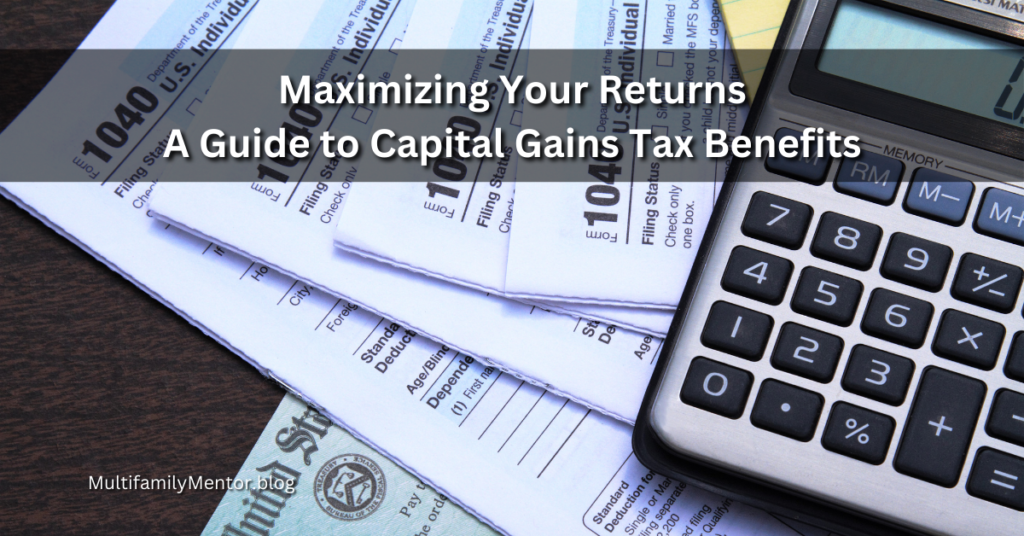Learn how to use the capital gains tax benefits that are available to you, such as long-term investing and tax loss harvesting.
Executive Summary
If you are thinking about investing in stocks, bonds, real estate, or even cryptocurrencies, you should know that you may be able to get tax breaks. The capital gains tax advantage is one of the most important perks. When you sell an asset for more than you bought it for and make a profit, you may have to pay capital gains tax. However, there are ways to reduce or avoid these taxes. In this article, we'll look at the different tax benefits investors can get from capital gains.
Introduction
When you invest in something, you usually want to make money. But when you make money, you have to pay taxes, and taxes on capital gains can cut into your returns. But there are ways to pay as little tax as possible and keep more of your earnings. You can use the capital gains tax benefits that are available to you if you understand the tax code and use good strategies.
Long-Term Capital Gains
Long-term capital gains are profits made on assets that have been held for more than a year. Short-term capital gains usually have a higher tax rate than long-term capital gains. Here's what you need to know about long-term capital gains:
- Your long-term capital gains are taxed at a rate between 0% and 20%, depending on your income bracket.
- Your long-term capital gains tax rate is 0% if you are in the 10% or 15% tax bracket.
- Your long-term capital gains tax rate is 15% if you have a tax rate of 20% or more.
- Your long-term capital gains tax rate is 20% if you are in the highest tax bracket (37%).
- Your Medicare tax rate can also be affected by long-term capital gains, so it's important to know the rules.
Short-Term Capital Gains
Profits made on assets held for less than a year are called short-term capital gains. Most of the time, the tax rate on short-term gains is higher than the tax rate on long-term gains. Here's what you need to know about short-term capital gains:
- Short-term capital gains are taxed at the same rate as your regular income tax rate.
- Short-term capital gains can add up quickly, especially if you trade a lot.
- You can use losses from short-term capital gains to balance out gains from other areas.
Getting money back from taxes
Tax-loss harvesting is a way to make sure that your portfolio's gains are balanced out by losses. If you sell assets that have lost value, you can use the money from those sales to offset gains in other parts of your portfolio, which will lower your tax bill. Here's what you need to know about tax-loss harvesting:
- You can use tax-loss harvesting to cancel out both short-term and long-term capital gains.
- You can use up to $3,000 in capital losses per year to offset other types of income, like wages or interest income.
- You can carry forward any unused capital losses to future years.
Step-Up in Basis
The step-up in basis rule may apply to you if you inherit property. With this rule, you can set the assets' cost basis back to their fair market value at the time of the previous owner's death. Here are a few things you should know about the step-up in basis:
- The step-up in basis rule only applies to assets that are inherited.
- The rule can be used to lower your capital gains tax bill when you sell inherited assets.
- The amount of the basis increase depends on how much the asset was worth when the previous owner died.
Qualified Opportunity Zones
Qualified Opportunity Zones (QOZs) are areas where people can invest in businesses and real estate development and get big tax breaks in return. Here are a few things you should know about QOZs:
- Qualified Opportunity Funds can be used to put money into QOZs (QOFs).
- The tax benefits of investing in QOZs include not having to pay capital gains tax right away, paying less capital gains tax, and possibly gaining value without having to pay tax on it.
- Investors must keep their QOZ investments for a certain amount of time in order to get the tax benefits.
Conclusion
Investing in assets can be a good way to make money, but taxes can cut into the money you make. If you know about the different capital gains tax breaks you can use, you can lower your tax bill and keep more of your profits. You can take advantage of these benefits by investing for the long term, taking advantage of tax losses, and investing in QOZs.

